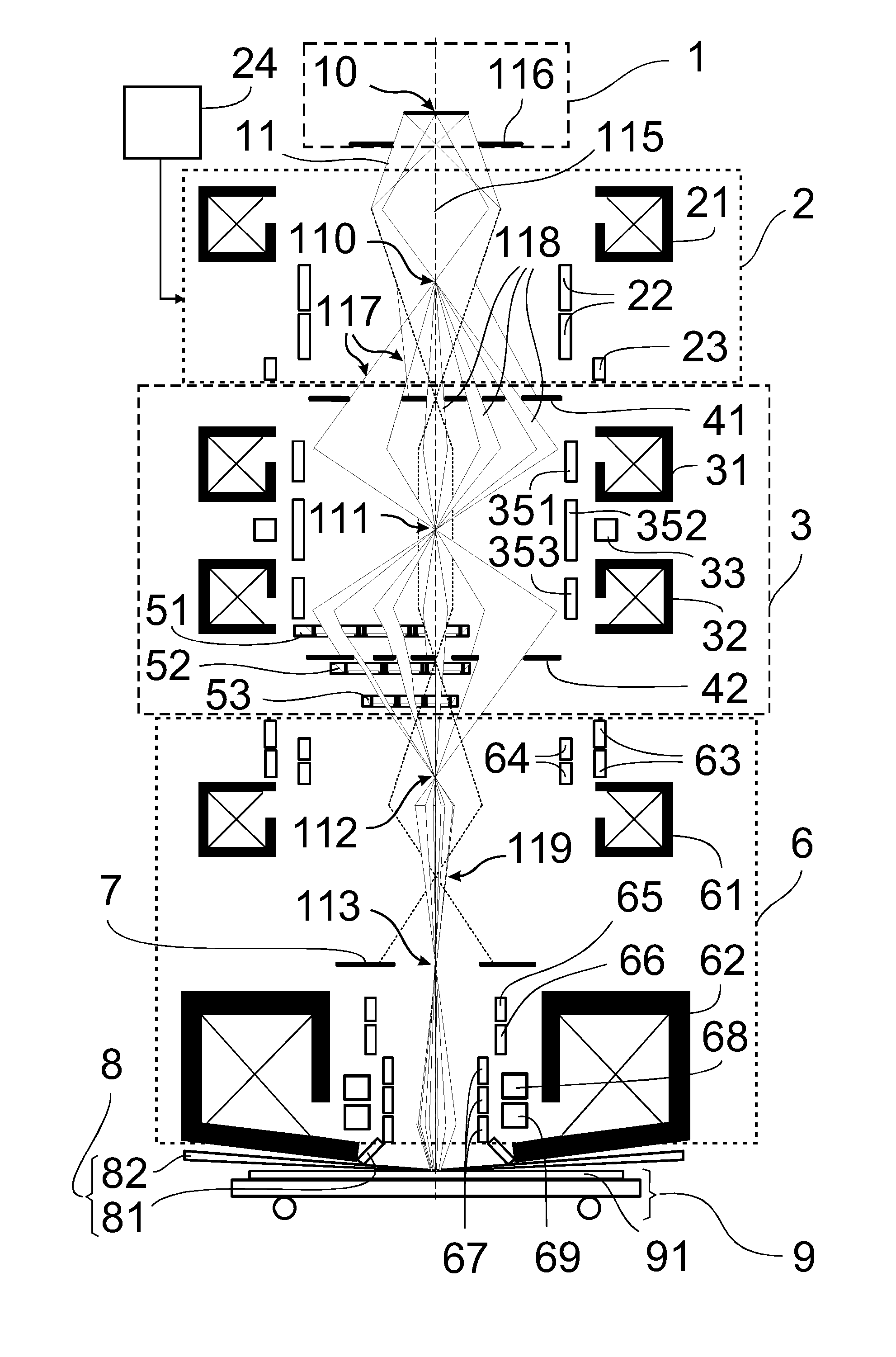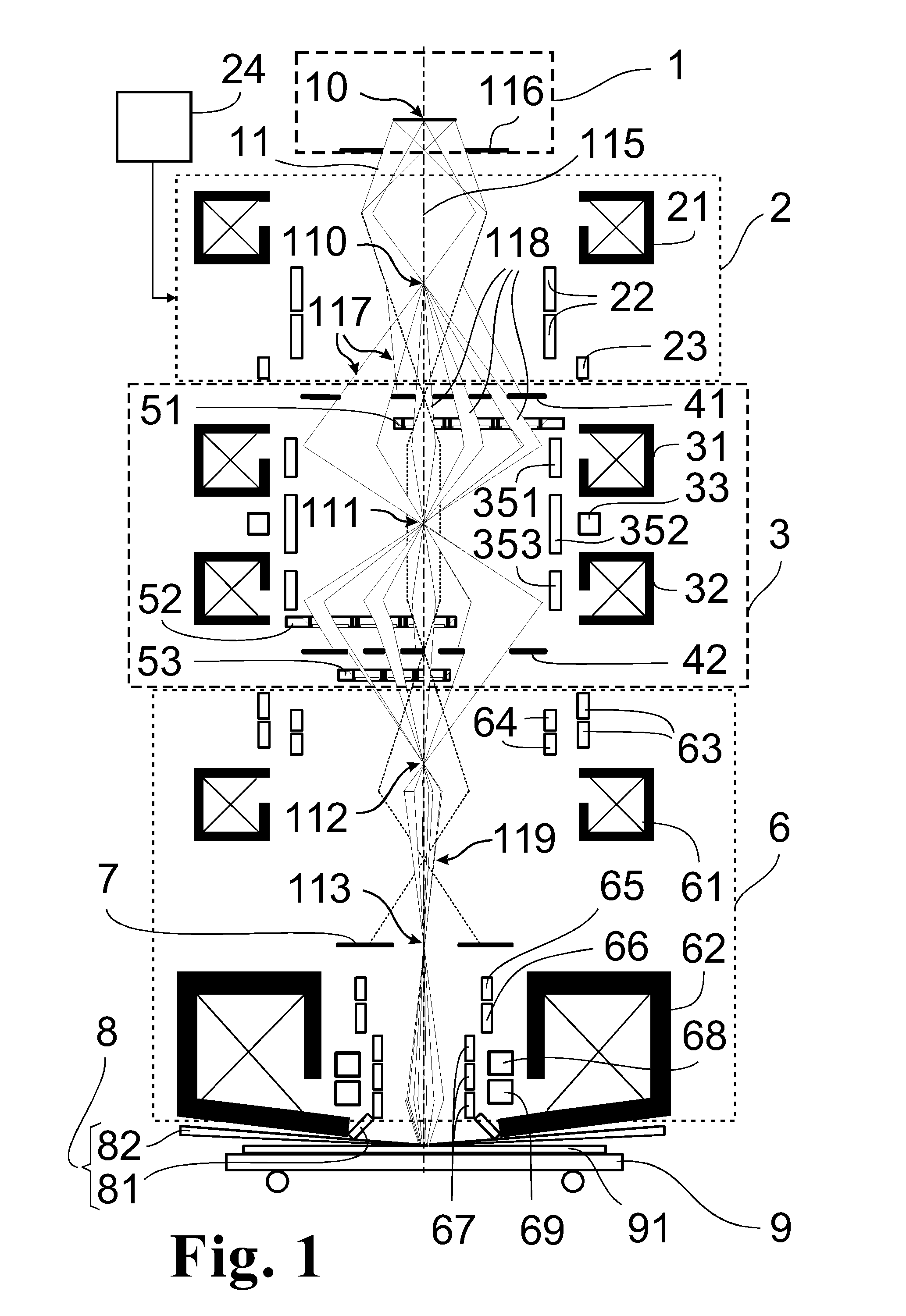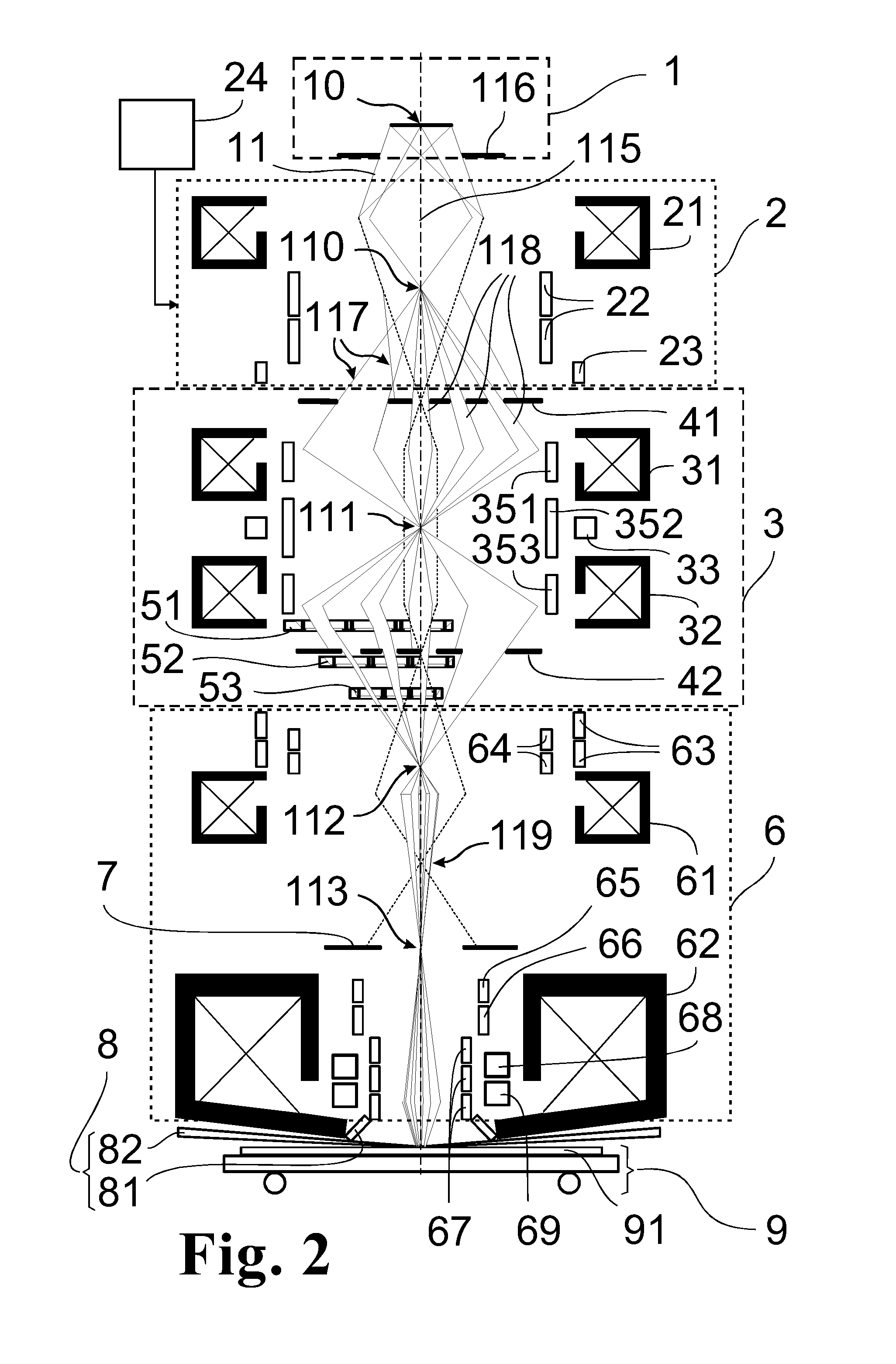Arrangement for the illumination of a substrate with a plurality of individually shaped particle beams for high-resolution lithography of structure patterns
a technology of structure pattern and arrangement, which is applied in the direction of cathode ray tubes/electron beam tubes, electrical equipment, etc., can solve the problems of reducing the productivity of high-resolution electron beam writers in high-end mask fabrication, increasing writing times, and sacrificing a, so as to achieve high substrate throughput and achieve the effect of reducing the flexibility of structure patterns, and reducing the number of lithography errors
- Summary
- Abstract
- Description
- Claims
- Application Information
AI Technical Summary
Benefits of technology
Problems solved by technology
Method used
Image
Examples
Embodiment Construction
[0051]As is shown schematically in FIG. 1, the arrangement for substrate illumination with a plurality of individual particle beams basically comprises a particle beam source 1 defining an optical axis 115 along which the entire particle beam column up to the substrate 91 has the following components: an illumination system 2 for illuminating a first multiple-format diaphragm array 41 in selectable illumination groups, a beam modulator system 3 for generating a plurality of particle beamlets 118 containing, in addition to a condenser system 31-32, a group deflection system 35 and a multideflector system 5 cooperating with a multi-aperture diaphragm system 4 for individual deflection and shaping of the individual particle beamlets 118. Following the latter is a reduction system 6 for imaging the particle beamlets 118 transmitted by the multi-aperture diaphragm system 4 onto the substrate 91 moving on a substrate stage 9. A substrate monitoring sensor arrangement 8 is provided directl...
PUM
| Property | Measurement | Unit |
|---|---|---|
| edge length | aaaaa | aaaaa |
| edge length | aaaaa | aaaaa |
| edge length | aaaaa | aaaaa |
Abstract
Description
Claims
Application Information
 Login to View More
Login to View More - R&D
- Intellectual Property
- Life Sciences
- Materials
- Tech Scout
- Unparalleled Data Quality
- Higher Quality Content
- 60% Fewer Hallucinations
Browse by: Latest US Patents, China's latest patents, Technical Efficacy Thesaurus, Application Domain, Technology Topic, Popular Technical Reports.
© 2025 PatSnap. All rights reserved.Legal|Privacy policy|Modern Slavery Act Transparency Statement|Sitemap|About US| Contact US: help@patsnap.com



